Early on a sunny autumn Saturday, I went for a walk around the neighbourhood to experiment with Ilford Delta 100, a new lens, and a Red 25 filter.
I started my film photography journey in the spring of 2022. I have followed a three-pronged approach to learning film photography: I bought as many different films as I could, I read as many books and articles as I could, and I brought a camera everywhere.
Unfortunately the books and articles (and podcasts especially) fueled an acute case of GAS which I believe is currently in remission. I bought my first film camera locally: a beautiful Nikon FE and an 80-200 f/4.5. I fast-forwarded to my dream camera: a Nikon FM3a and a small collection of F-mount prime lenses.
In the summer I met a new friend Shauna who suggested I try black and white film with a Red 25 filter. At that point in my learning curve I’d only shot one roll of HP5, but I’d also read the Darkroom’s excellent Guide to Color Filters with B&W Film.
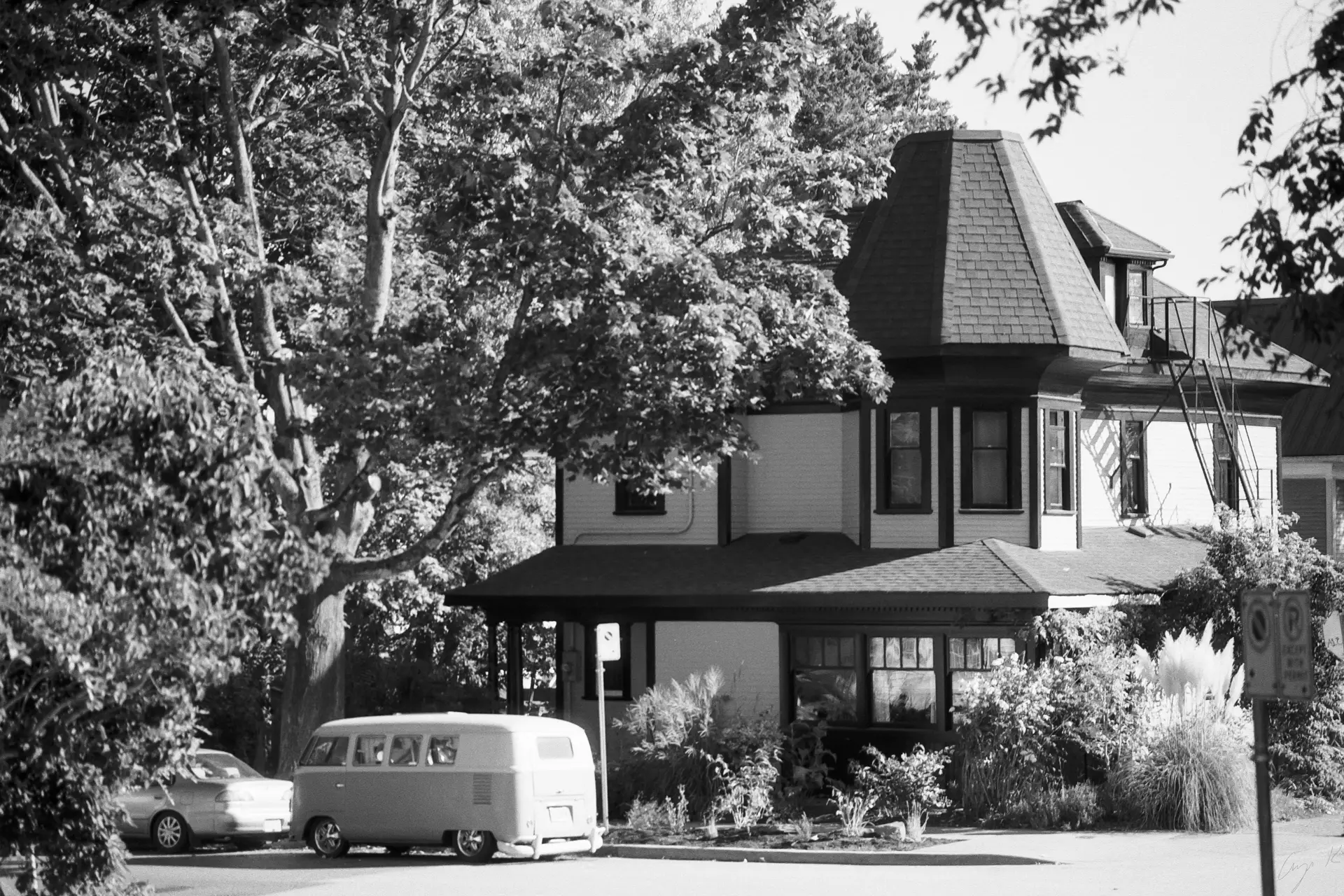
I knew I wanted to try Ilford Delta 100 for its “fine grain” and “contrast” (characteristics I knew only from reading, and not from experience). I was also eager to play with a recently acquired Voigtländer 90 mm f/2.8 APO-Skopar SLII-S
I figured it was the perfect time to try a Red 25 filter, with pale morning sky and leaves turning yellow, orange, and red. I hoped it would highlight leafy trees and darken the sky for contrast.
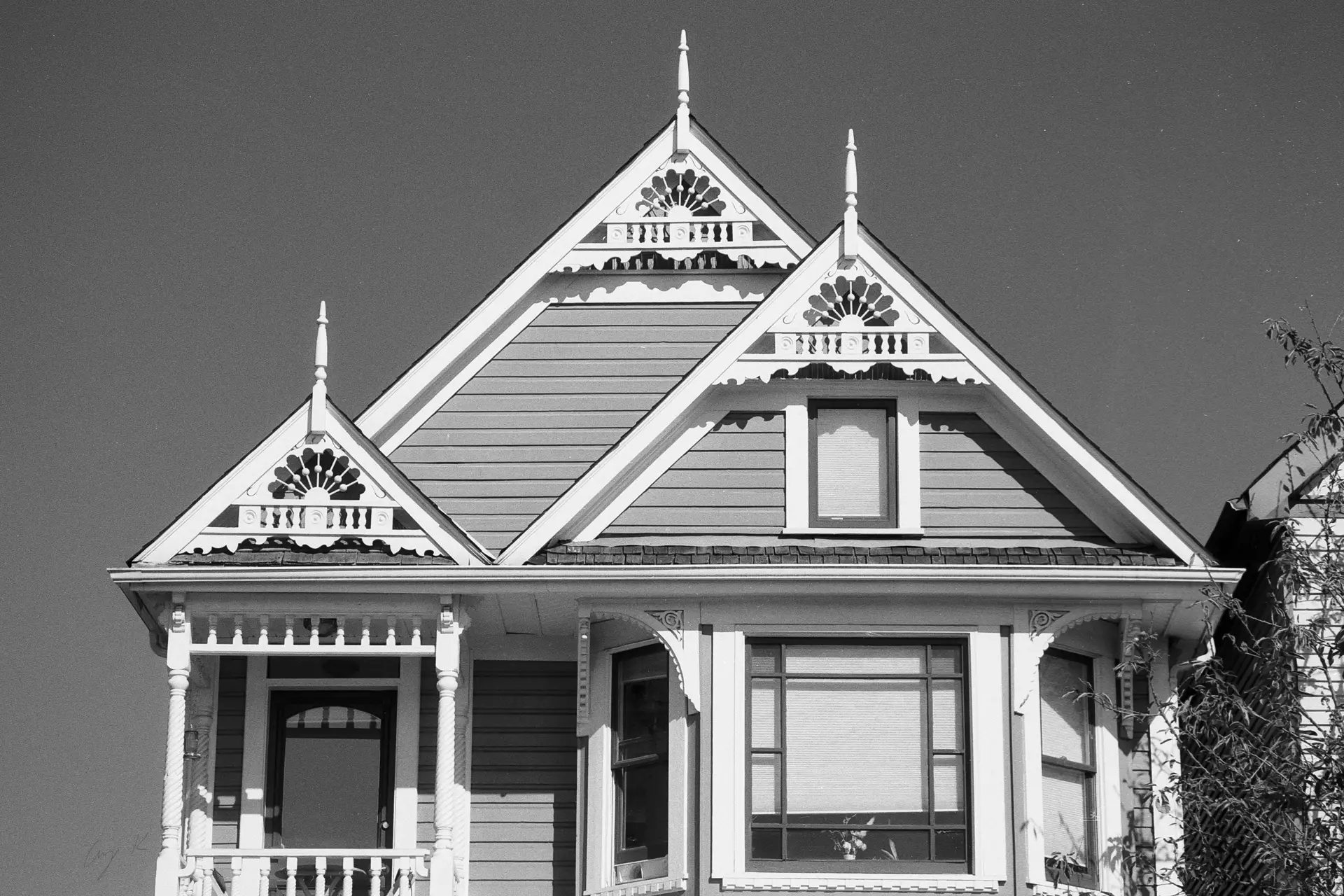
One thing I’ve really enjoyed about film photography is that it gets me out of the door to experiment. Walking in search of different subjects and lighting conditions has given me new appreciation for our beautiful neighbourhood.
Strathcona is one of the “oldest” neighbourhoods in Vancouver; old in the context of a city incorporated in 1886, young in the context of the XwMuthkwium (Musqueam), Sḵwx̱wú7mesh (Squamish) and Tsleil-Waututh Nations who have inhabited Burred inlet since long before colonization.
The neighbourhood is unique (in Vancouver) with its leafy streets, narrow houses, corner stores, and low-rise walk-ups. Some of these homes were originally built in the late 1800’s.

Because I was shooting hand-held (still need to get a tripod) I found I was limited to f/2.8 or f/4 with the 90mm medium telephoto, ISO 100 film, and 3 stops compensation for the filter. The shorter depth-of-field (unintentionally) helped separate the beautiful buildings from foreground foliage on the opposite sidewalk.
I’d also read Sroyon’s excellent series on Contrast and Tonality, but after experimenting I found most of the photos had plenty of contrast without tone curve adjustment.
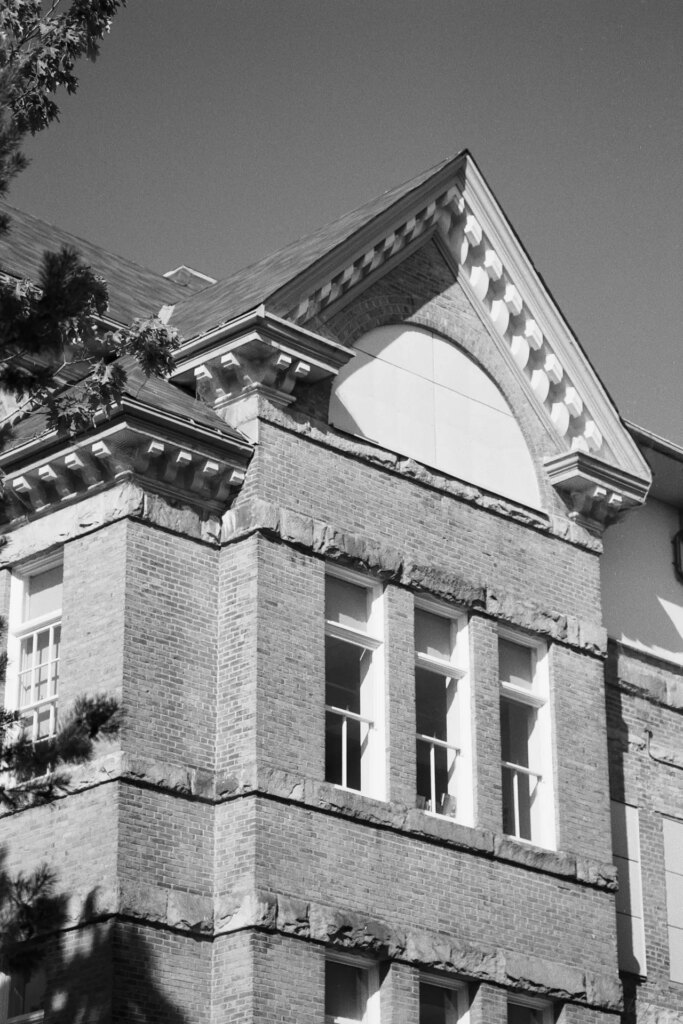
I was blown away by the Delta 100. I love how it reveals slight differences in tone from individual bricks, mottled siding, and shingles. I was also very pleased with the perspective and sharpness of the 90mm lens! It is time to get a tripod if I’m going to experiment with ISO 100 and slower.
Finally, the filter revealed the orange and red leaves of these large trees almost infrared. I did not anticipate the intensity of the effect.
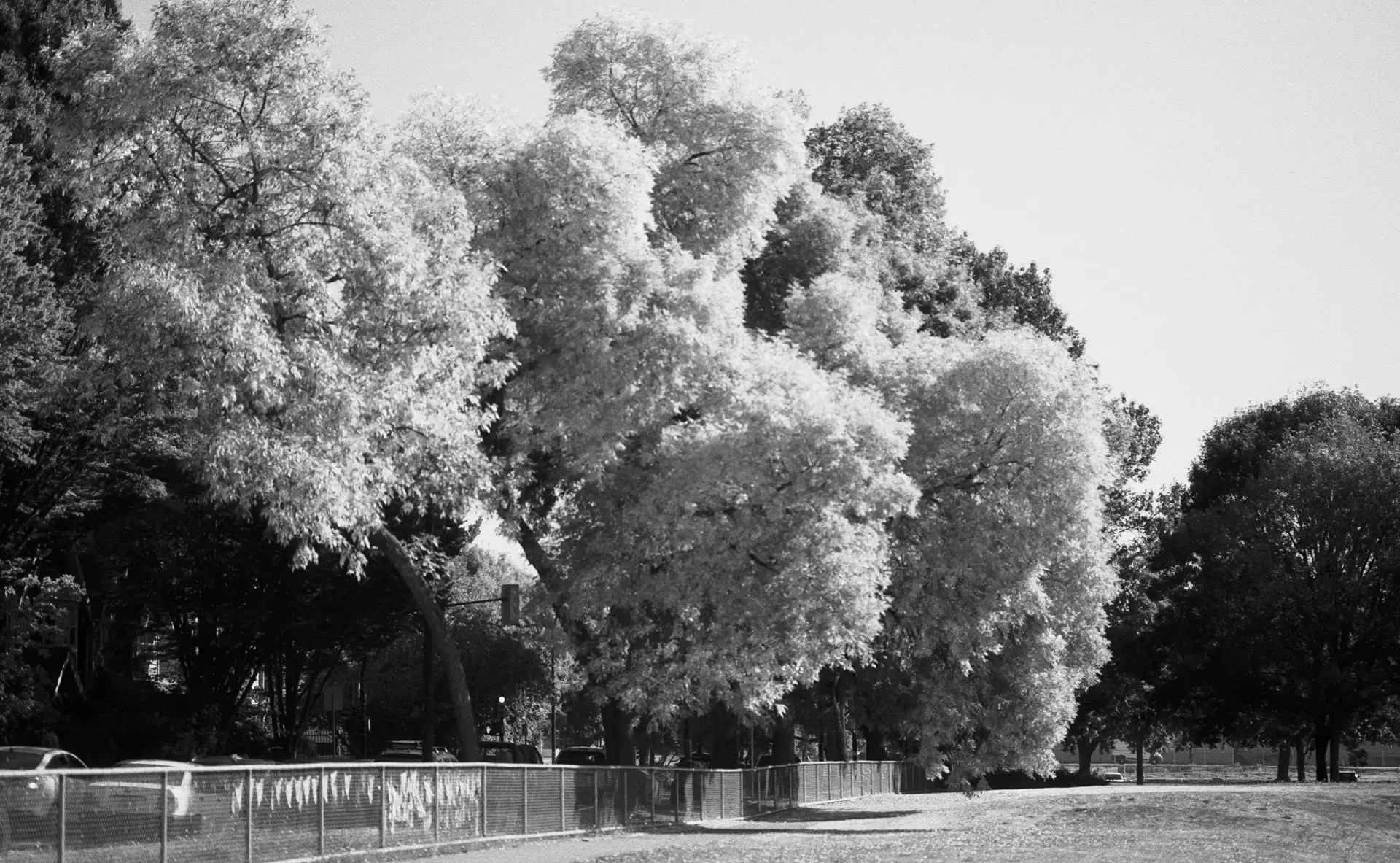
A wonderful Saturday morning spent experimenting with Delta 100 and a Red 25 filter.
Thank you for reading!
Share this post:
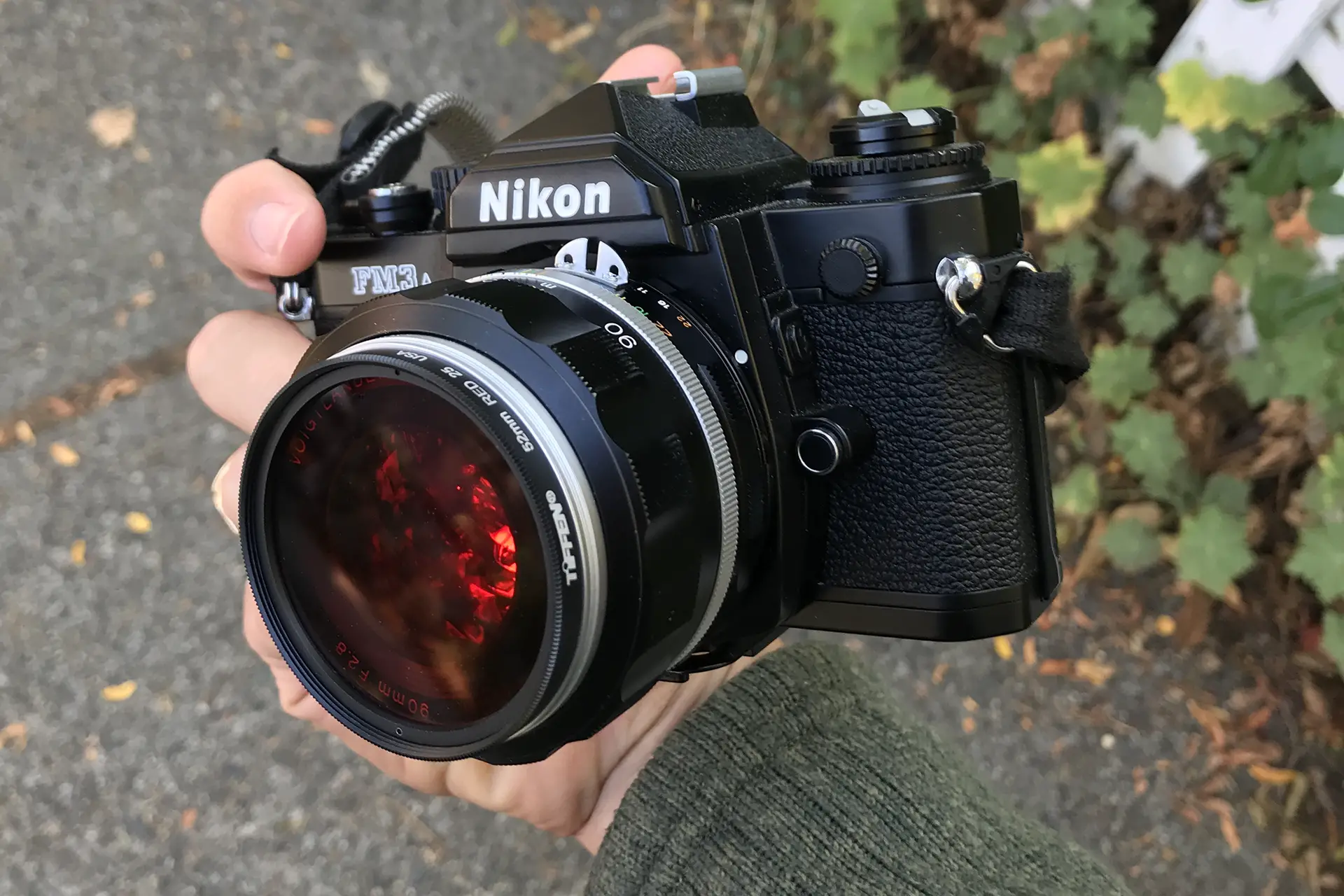








Comments
Agata Urbaniak on 5 frames with Ilford Delta 100 and a Red 25 filter – By Gus
Comment posted: 07/02/2023
Castelli Daniel on 5 frames with Ilford Delta 100 and a Red 25 filter – By Gus
Comment posted: 07/02/2023
The FM series were brilliant cameras. I have a FE2 that has a short 85mm Nikkor. It complements my ancient M2. A perfect pair similar in size & weight.
Comment posted: 07/02/2023
Julian Tanase on 5 frames with Ilford Delta 100 and a Red 25 filter – By Gus
Comment posted: 08/02/2023
All the best !
Sroyon on 5 frames with Ilford Delta 100 and a Red 25 filter – By Gus
Comment posted: 09/02/2023
I also wrote an article on filters for B&W photography, in case you're interested :)
Comment posted: 09/02/2023
Kim Wilson on 5 frames with Ilford Delta 100 and a Red 25 filter – By Gus
Comment posted: 14/02/2023